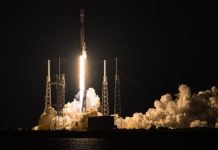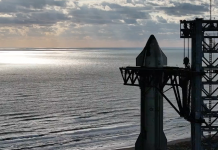Last updated on December 8th, 2022 at 03:12 pm
SpaceX rocket wreckage creates spectacular light show in the night sky in the US Northwest
Last night, astronomers from Oregon and Washington saw an unexpected sight: what looked like a meteor shower swept across the night sky. Most likely, these were the remnants of a SpaceX Falcon 9 rocket burning in the atmosphere. While SpaceX has yet to claim responsibility for the spectacle, numerous meteorologists and astronomers have already identified the sky’s lights as harmless rocket debris.

Those interested can see many videos of this event – for example, in replies to one of the threads on Twitter. “We had a perfect show today thanks to SpaceX, ” University of Washington astronomer James Davenport told KING5. “ It was the top of the Falcon 9 rocket — what we call the second stage. In fact, it launched about three weeks ago and did exactly what it had to do: put the satellites into orbit. The only glitch she had was that this stage did not forcibly descend from its orbit, so it did not fall when and where we expected it. It has been gradually decreasing over the past three weeks, and we were lucky, and it flew overhead. “
The Falcon 9 is a partially reusable two-stage rocket. The first reusable stage, which houses nine Merlin engines, does the initial hard work of lifting the rocket off the ground, while the second stage, with a single Merlin engine, brings it into orbit. The first stage returns, as a rule, successfully to the ground (and more often to unmanned barges). The company usually leaves the second stage in orbit (after which it gradually decreases) or is sent forcibly to combustion in the atmosphere.
Also, in the Atlantic, SpaceX’s special net-equipped boats typically retrieve portions of the rocket’s nose cone for later reuse. Sometimes SpaceX catches falling fairings right in the air, but this depends on the wind and weather.
We are talking about the second stage of the rocket launched on March 4 – then another batch of 60 Starlink satellites was launched into low-earth orbit, and the first stage was safely returned to an unmanned barge called Of Course I Still Love You (“Of course, I still love you”).
Jonathan McDowell (Jonathan McDowell), an astronomer at the Center for Astrophysics, wrote on Twitter about the event, noting that such re-entry debris is not uncommon: “This is the 14th piece of debris weighing more than one ton, which returned to Earth January 1 this year. In other words, about one a week. Plus, of course, there are many more small details. “
Mr. McDowell noted that predicting the timing of such events can be difficult at times. The debris disintegrates high in the atmosphere, about 60 kilometers above the Earth’s surface, well above commercial flights’ cruising altitude (about 12 kilometers). But the combination of headwinds in the Earth’s upper atmosphere and the speed of movement (the debris is moving at a speed of about 27,000 km / h) makes it difficult to accurately predict when and where re-entry into the atmosphere will occur.
Seattle’s National Weather Service (NWS) also identified the bright lights as debris from Falcon 9’s second stage. The NWS noted that the debris re-entry rate is much slower than meteor showers, which travel at over 72,000 km / h.
These re-entrances are generally safe as all rocket components and materials are burnt in the atmosphere. The NWS tweeted: “There are currently no expected impacts on land in our region. ” So the only big impact was a lot of great posts on the web.




